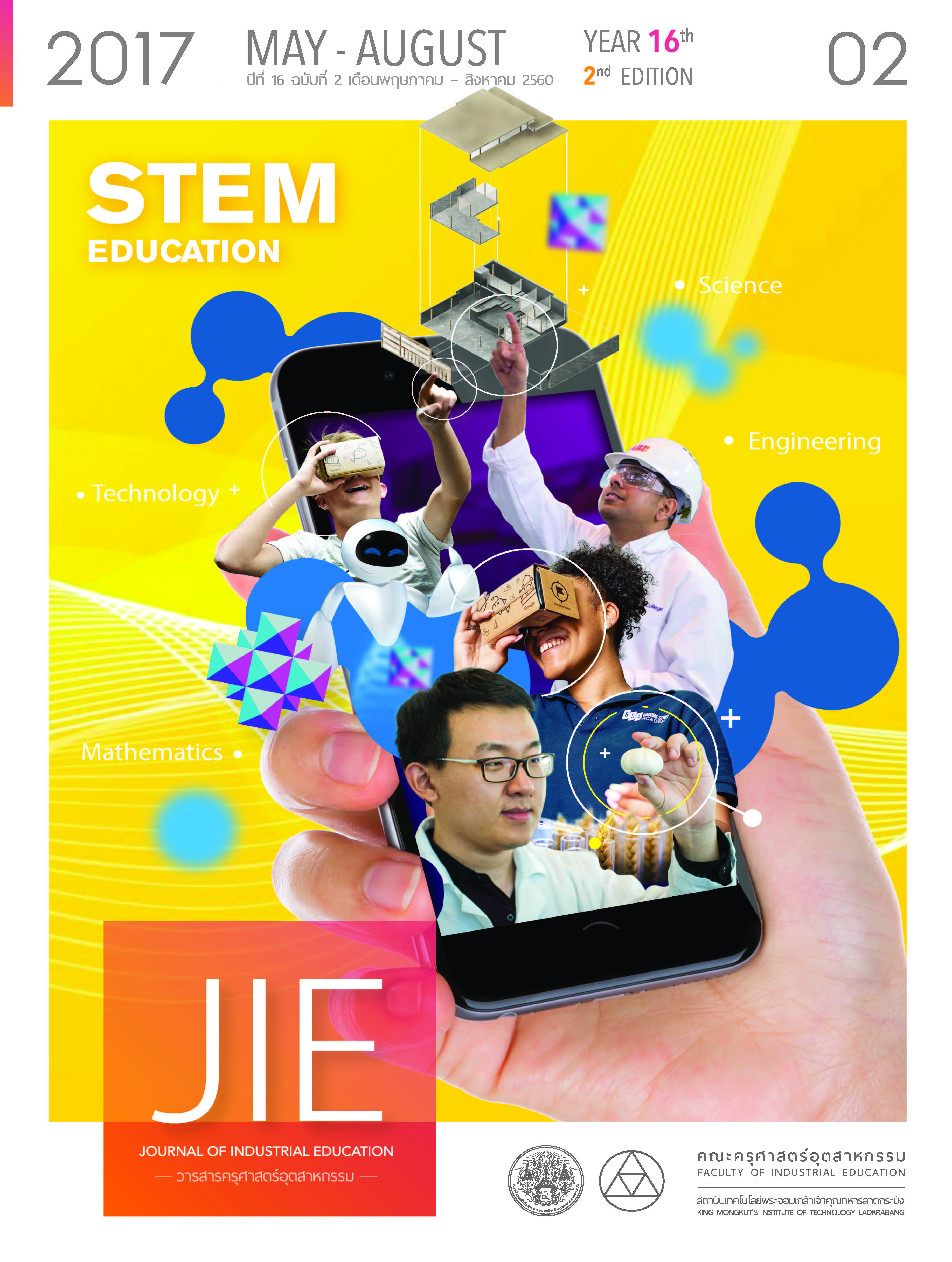A DEVELOPMENT OF BLENDED LEARNING VIA WEB-BASED INSTRUCTION ON PROCESS OF CONDITION AND LOOP FOR GRADE 7 STUDENTS.
Keywords:
Blended learning, Management learning, web-based instruction, process of condition and process of loopAbstract
The objectives of this research were 1) to develop blended learning via web-based instruction on process of condition and loop and 2) to compare learning achievement between the students who were in an experiment group to which the blended learning via web-based instruction was given as a treatment, and the students who were in a controlled group, engaged in a traditional learning. The samples of the study comprised 120 seventh grade students at Phanatpittayakarn School in 2016, selected by means of Cluster Sampling Method. The samples were divided into 3 sample groups: The first with 40 students for the examination of learning efficiency, The experiment group of 40 students for a comparison of learning achievement and The controlled group of 40 students for a comparison of learning achievement. The research instruments included a quality assessment form and an achievement test with difficulty level ranging from 0.25 to 0.78, the discrimination level from 0.30 to 0.65 and the Reliability levels 0.70. The data were analyzed for Process Efficiency (E1)/ Product Efficiency (E2), arithmetic mean, standard deviation and t-test for independent samples. The results showed that:
1) The content quality ( = 4.72 and S.D. = 0.46), media production quality (
= 4.55 and S.D. = 0.50) and total quality (
= 4.58 and S.D. = 0.50) of the blended learning via web-based instruction on process of condition and loop were at the excellent level.
2) Efficiency of web-based instruction on process of condition and loop was at 75.63/75.13.
3) The average learning achievement of the students in the experiment group was higher than that of the students who were in a controlled group.
References
[2] Thanomporn Laohajaratsang. 2002. Designing e-Learning. Bangkok : Aroonkarnpim.
[3] Pratuang Wiboonsak. 2010. Blended learning and Mixed Method. Retrieved November 21,2016,fromhttps://www.sahavicha.com/name=blog&file=readblog&id=5720
[4] Seels B. and Glasgow Z. 1998. Making Instructional Design Decisions. 2nd ed. Upper Saddle River NJ : Merrill. p 7.
[5] Carman, J.M. 2005. Blended learning design: Five key ingredients. Retrieved November 21, 2016, from www.agilantlearning.com/pdf/Blended Learning Design.pdf
[6] Priroj Teeranatanakil, Paiboon Kiattikomol and Saksun Yampinij. 2003. Design and producing computer instruction package for e-Learning. Bangkok : Sun Sue Some Krungthep.
[7] Chaiyong Brahmawong. 2013. Developmental Testing of Media and Instructional. Silpakorn Educational Research Journal, 5(1), p. 7-19.
[8] Bloom, B.S. 1976. Human Characteristic and school Learning.New York : McGraw - Hill Book Company.
[9] Thanakorn Khanthakhet. 2015. The Development of a Blended Learning Model Emphasizingon Information and Communication Technology Literacy Characteristic. Doctor degree of Educational Technology Faculty of Education, Srinakharinwirot University.
[10] Sugree Rodpothong. 1998. Computer Assisted Instruction Design. Nonthaburi : Sukhothai Thammathirat Open University.
[11] Thanongsak Chaichuensaen. 2016. A Development of Blended Learning with the Integration of Web-based Instruction VIA Cloud Computing on Bench Work and the Electronic Circuits of Undergraduate Student. Master degree of Industrial Education. Faculty of Industrial Education In Branch Education Technology, King Mongkut’s Institute of Technology Ladkrabang.
[12] Sunrach Horสรรรัชต์ ห่อไพศาล. 2544. Innovation and Education Technology Application in the new Millennium : Web Based Instruction. SPU Research, 1(2) : 93-104.
[13] Kanjana Sitthiratanayuenyong. 2015. The Blended Learning Model to Develop the Achievement on Statement Loop Programming Subject of Upper Secondary Benchamaratrangsarit School Chachoengsao. Master degree of Science. Faculty of Industrial Education, King Mongkut’s Institute of Technology Ladkrabang.
[14] Ayala, J. (2009). Blended Learning As A New Approach To Social Work Education. Journal of Social Work Education Volume 45, Issue 2.
[15] Graham, C.R. 2013. Emerging practice and research in blended learning. Retrieved November 21, 2016, from www.academia.edu/2068375/
[16] Narumon Antarikanon. 2008. The Development of Online Lessons on Webpage Development with Dreamweaver for the Central Regional Institute for Non-formal Education and Informal Education Students. KKU Research Journal, 13(11) : 1298-1309.
[17] Abhichat Anukulwech. 2012. Blended learning. Retrieved November 21, 2016, from https://www.chon tech.ac.th/~abhichat/1/index.php? option=com_content&task=view&id=222
[18] Allan, B. 2004. Blended learning tool for teaching and training. UK: Facet Publishing.
[19] Soontaree Nilbuaklee. 2014. Effect of Blended Learning on Learning Achievement in Baking Cake for Sophomore Students of Bachalor Degree at Dusit Thani College. Master degree of Industrial Education. Faculty of Industrial Education, King Mongkut’s Institute of Technology Ladkrabang.
Downloads
Published
How to Cite
Issue
Section
License
"The opinions and contents including the words in papers are responsibility by the authors."
"ข้อคิดเห็น เนื้อหา รวมทั้งการใช้ภาษาในบทความถือเป็นความรับผิดชอบของผู้เขียน"



